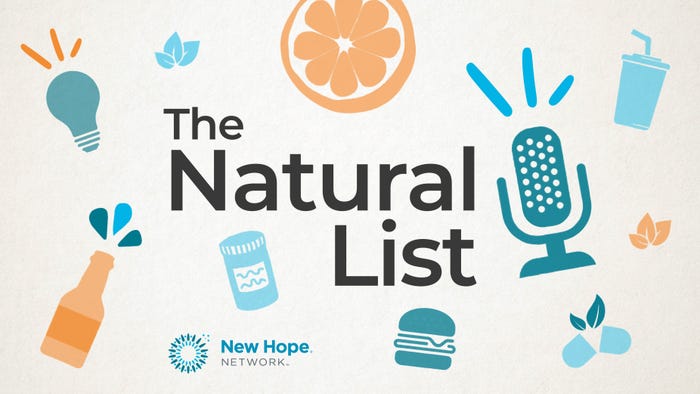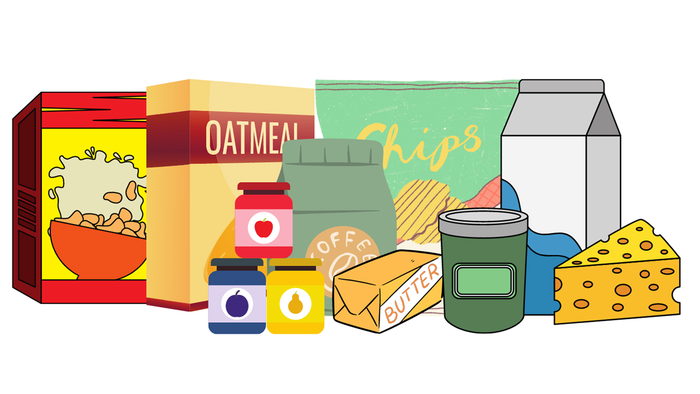April 24, 2008

If you think middle-aged men are the target sales demographic for cholesterol-lowering supplements, you're a little off the mark. In fact, high serum cholesterol is most prevalent among white, non-Hispanic women, according to the Centers for Disease Control and Prevention in Atlanta, but the condition does not discriminate.
The conventional course of action for anyone with high cholesterol is a pamphlet on diet and lifestyle modifications and treatment with statin drugs such as Lipitor and Zocor. These meds reduce low-density lipoprotein cholesterol but don't improve other lipid levels, and also can cause a variety of side effects. Consumers who are looking for natural supplements for cholesterol control have several good options.
"Conventional drugs lower cholesterol and that's pretty much it. They don't generally raise [high-density lipoprotein] HDL or affect the other risk factors for heart disease, so it becomes somewhat limiting. If you give them Lipitor, you're really only addressing one piece of the pie," says Darin Ingels, N.D., author of The Natural Pharmacist: Lowering Cholesterol (Prima, 1999). "When you look at some of the natural supplements—garlic, policosanol, red yeast rice—[researchers] have found that not only do they lower total cholesterol, but they raise HDL, the good cholesterol; they lower [the blood fat] lipoprotein(a); and in some cases they may have an effect on homocysteine," (which is an amino acid that can block arteries).
Good Fat, Bad Fat
Cholesterol is a soft, waxy substance present in blood lipids (fats) and all body cells. Manufactured by the liver, the body needs it to form cell membranes and hormones and to serve other bodily functions. Too much circulating cholesterol is a major risk factor for stroke and coronary heart disease, America's No. 1 killer.
The American Heart Association estimates 102 million American adults (out of a total population of 291.3 million) have blood cholesterol levels greater than 200 milligrams per deciliter, which is considered borderline high, and about 41.3 million have levels greater than 240 mg/dL, which is high. People whose total cholesterol is above 240 mg/dL have twice the heart attack risk as those whose levels are 200 mg/dL.
HDL is the good cholesterol. Keeping HDL levels high (above 60 mg/dL) reduces heart attack risk. According to work published in the American Journal of Cardiology in 1990, for every percent increase in HDL levels, the risk of heart attack drops 3 percent to 4 percent. LDL is the bad guy. Keep LDL levels low (below 100 mg/dL is optimal) because too much of this fat can clog arteries and increase heart attack and stroke risk. It's also important to keep triglycerides, another type of blood fat, below 150 mg/dL. Lipoprotein(a) is another damaging blood fat; high levels carry a 10 times greater risk for heart disease than elevated LDL levels.
Diet, lifestyle and genetics all contribute to whether a person will have cholesterol-control issues. According to the AHA, most people can increase their HDL levels by improving their diets, exercising, maintaining a healthy weight and not smoking. Minimizing saturated fats, trans fats and cholesterol in the diet makes a difference, as does increasing fruit, vegetable and whole grain consumption. These modifications are often enough, but some people do need extra help. If their doctors agree there is no danger in trying dietary supplements, there are several products that can improve lipid profiles, including policosanol, red yeast rice, gugulipids and garlic.
Policosanol
This supplement is derived from sugarcane and has been shown to lower LDL cholesterol levels by 30 percent in some cases, which is as good as, if not better, than prescription statin drugs. "The thing about policosanol is that it is one of the few natural substances they've actually done head-to-head studies on against the statin drugs," says Ingels, who practices at New England Family Health Associates in Southport, Conn. "There have now been three studies, each against a different statin drug. They were good-quality studies, and in all three cases they found that policosanol actually worked better than the statin counterpart, with no side effects."
Ingels recommends 10 mg of policosanol twice a day. "Why go with something that might even potentially have a side effect when you can use something that doesn't have any side effects at all," he says, referring to more than 30 studies published on policosanol showing no adverse effects.
Red Yeast Rice
The active components of red yeast rice are similar to those of statin drugs, Ingels says. "When you take the recommended amount of red yeast rice, which is 1,200 mg a day [divided into two doses], it is equivalent to taking 5 mg of a statin drug," he says. Although there haven't been any long-term studies proving it, Ingels warns there is a theoretical risk of liver damage, just as with statins, so he encourages people using red yeast rice to have their liver enzymes checked periodically.
David Heber, M.D., and colleagues from the University of California at Los Angeles, analyzed nine proprietary Chinese red yeast rice supplements and found the presence of monacolins, which inhibit cholesterol production, varied widely. The research, published in the April 2001 issue of the Journal of Alternative and Complementary Medicine, shows that of the nine products tested, the monacolin content ranged from zero to 0.58 percent by weight, and only one of the preparations had all 10 monacolin compounds. Since not all red yeast rice products have the same effect on lipid profiles, ask your supplier about monacolin content.
Gugulipid
A standardized extract of the Indian mukul myrrh tree, this Ayurvedic medicinal can lower both cholesterol and triglyceride levels. Nancy Urizar and David Moore report in the July 2003 issue of Annual Review of Nutrition that animal and human studies have shown that gugulipid can decrease elevated blood lipid levels.
Ingels says: "There have been several studies showing that gugulipid can reduce cholesterol, though not to the same extent as policosanol and red yeast rice. It is about a 12 percent to 15 percent reduction." He adds, "The side effect profile of gugulipid is very good, but some people can get nausea or a little gastrointestinal distress, but it is very unusual." Ingels recommends a dose of 500 mg three times a day.
Garlic
Numerous studies show garlic's ability to help improve cholesterol levels. Allicin, the phytochemical responsible for garlic's pungent aroma, is also what causes the physiological effects. Ingels says most studies have used garlic extracts standardized to 1.3 percent alliin, which is the component converted to allicin.
Garlic reduces total cholesterol by about 10 percent to 12 percent, Ingels says. He recommends 300 mg three times a day in addition to having patients use more garlic in their cooking.
Dena Nishek is a freelance writer and editor based in Boulder, Colo. She specializes in natural health, home and gardening topics.
Natural Foods Merchandiser volume XXIV/number 8/p. 34, 38
Natural Foods Merchandiser volume XXIV/number 8/p. 38
You May Also Like
.png?width=700&auto=webp&quality=80&disable=upscale)


